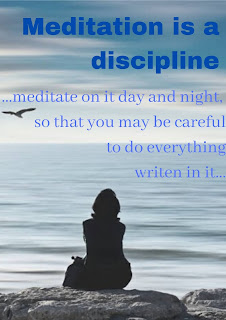HOW TO WRITE AND HARMONIZE NEW SONGS
THE
MYSTERY OF SOUND (TMS)
27th Aug. 2017
THEME: A NEW SONG
TOPIC: HOW TO WRITE AND
HARMONIZE NEW SONGS
INSTRUCTOR: DOPEMU ABIODUN
INTRODUCTION
The topic, “how
to write and harmonize new songs” came out of a deep desire from the heart of
Elmond Isaiah the director of the mystery of sound ministries to worship God
with a far more exceeding harmonious songs/music deeper than how we know to do.
Elmond Isaiah will always say that “there
is so much more in GOD yet untapped.”
How to write
and harmonize new songs is a must know techniques for every musician especially
the singers.
The bible
said in Psalm 96:6 that we should sing to the LORD a new song; all the earth
should sing to the LORD.
There is always
something special about newness. It’s exciting, fresh and have not been used by
anyone. Anything new should be something interesting and attractive. Everything
about God is ever new and fresh, so also does He deserve new songs from us at
all times and in all situation.
New songs as
we have established in the previous seminars can also be an old song that
catches your heart and you cannot let go of it for a long time. You just feel
good about the song within those times. But here we will discuss on how to deliberately
write songs and harmonize them.
DEFINITION OF
TERMS
Melody can be define
as the linear structure of a piece of music which single notes follow one
another. It is the primary or the most basic and recognizable part of the harmonic
piece of music.
Harmony is a friendly agreement of musical
notes in one accord at the same time. It can also be the addition of note(s) to
the melody note which are in consonance to each other.
Harmony can also
be singing voices or musical notes carefully arranged together to give pleasing
sounds to the ear
New is anything that has not been used
by anyone yet, new means fresh, recently made, created or invented.
A Song is made up of constructive words set to music. Song is a musical
composition with lyrics for voice or voices (Melody and or harmony)
with the aim to be performed by singing...
WRITTING AND HARMONIZING NEW SONGS
A song must
not necessarily be with words...because not only humans sing...birds and other
animals sing too...
The words of a song or poetry
represented in musical form is what is known as LYRICS.
How do you write a new song?
There are different
ways of writing songs, for some people, lyrics just pop up in their head as
they do house chores, bathing, walking, working in the office, worshipping etc.
But it’s not enough to just have songs like that. It’s good to also know how to
write and harmonize songs on purpose.
STEPS TO WRITING NEW SONGS
These steps
are not a strict rules which must be followed at all times…they are just a
guide to help you though.
1.
SENTENCE
To write a song many times you
need a number of things to guide you through. Even if it’s a spontaneous song
you sure need to develop it. Having a good TITLE for a song before you start
writing is one of the first major thing you need as it will help you carve out
many things needed to grace your song from thence. But to get a TITLE for a
song is not always easy, so you can start by having a good SENTENCE which can help
you carve out a TITLE to start with. Let’s make a SENTENCE like “I’m overwhelmed by God's love.”
We can have
‘Overwhelmed’, ‘God's love’, or ‘Overwhelming Love’ as a song TITLE from the
sentence.
2.
TITLE.
This is the heart and soul of a song.
Like was
said in step one, if you want to write a song then you need to have something
in mind to guide you. Having a good TITLE is one. A good TITLE must be
memorable. It should be something that can make the listeners want to listen to
the song over and over again.
TITLE of a
song should not be a long sentence. For example, THIS IS THE STORY OF MY LIFE. This
sentence is actually too long for a song TITLE. A phrase of at most six words should
be your TITLE and it should sum up the heart of the song's message. Instead of
saying THIS IS THE STORY OF MY LIFE for a song TITLE…why not say STORY OF MY
LIFE? Or THIS IS…....fill in the space with something captivating.
You can also
use an image or action word in your TITLE or as your TITLE to give it ENERGY
and make it more interesting.
One way to
catch listener’s attention is to write a TITTLE that carries energy. E.g. FLAWS [kiki], PRESSURE [JM] Anthem [William
Murphy] etc. TITLE in a phrase form is also interesting. E.g. WISH YOU COULD
PRAY, UPSIDE DOWN, GOTTA HAVE YOU... Funny enough these are gospel songs.
You can keep
a small note book and write down TITLES as they come.
3.
MAKE A LIST OF QUESTIONS SUGGESTED BY
THE TITTLE.
Let’s use
the same simple sentence in step 1 to derive out a TITLE and QUESTIONS
suggested by the TITLE.
“I’m overwhelmed by God's love”
We can have ‘Overwhelmed’, ‘God's love’, or ‘Overwhelming
Love’ etc. as our TITLE.
Now, let’s pick
‘Overwhelming Love’ as a TITLE out of the other TITLES carved out from the
SENTENCE and think outside the box with TITLE and the entire sentence…. If
someone were to write a song with this TITLE, what QUESTIONS will come from it?
E.g. What does the title mean? How do I feel about it? Why am I overwhelmed by
God’s love? What happened to cause this overwhelming love? You need to express
how you feel in your mind concerning the TITLE by asking series of QUESTIONS.
That is, the emotional part of the joy you feel should be considered. Think
also about the entire SENTENCE.
4.
CHOOSE A SONG STRUCTURE.
The most
popular structure of a song is the verse/chorus/verse/chorus/bridge/chorus...
But that should not be a rule because a song must not follow the normal song
structure or pattern popularly known. So you can structure a song depending on
what the music suggest to you. This happens only if you can listen properly to
the music.
Nowadays we
have short sections of structure like pre-chorus or lift between verse and
chorus to build anticipation into the chorus. Pre-chorus is a short section occurring
at the end of the verse creating anticipation going into the chorus...that’s
why it’s a pre-chorus. THE WAY THAT YOU LOVE ME...by Jonathan Mcreynold for example
is a song with a pre-chorus.
In
structuring a song, we can have a verse, chorus, bridge, pre-chorus, vamp. Some
songs have only one verse and a chorus and they still sounds perfect. For
example, He's able by Dietrick Haddon.
Also try moving
the chorus of your song to higher notes range than the verse or change the pace
of the notes or words to create more dynamics to the chorus to make it different.
5.
ANSWER AT LEAST ONE QUESTION IN THE
CHORUS AND ONE IN EACH VERSE.
Select the
question you want to answer in the chorus and the verses. Look for images and
action words to bring your answers to life.
Notice how
the lyric gives meaning to be imagined…
6.
Find
the melody in your lyrics, choose the lines you like best for your chorus, say
them loud with lots of emotion.
7.
You
can begin to add chords to the melody, also record every rough vocals you do to
be sure you get it down so you won’t forget.
8.
Choose
a question to answer in your first verse...make it one that draws the listeners
into the situation. Some writers start with something they experienced...it usually
get people into the song as they can be interested in the story.
9.
Don’t
forget that the verses must be connected to the chorus.....
10.
It’s
easy to build a second verse and bridge in this pattern.
11.
Never
forget to record the song no matter how rough it sounds.
The first 6 steps
above are the most crucial points to consider when writing a song. The other
steps are just like flavors to make your song composition better.
HOW TO HARMONIZE A NEW SONG
There are many
ways of harmonizing a song whether new or not, but we will consider only two
basic ones I extracted from the book “In Pursuit Of Musical Excellence” by
Elmond Isaiah. I advise everyone to read the entire book because it’s for
musicians of all categories. Even non-musically inclined can benefit from the
book as they will learn deeper realities on worship and the power of music.
Two basic methods
of harmonizing songs.
1.
Strictly
Technical Method
2.
Experimental
Method
Strictly Technical
This kind of harmony exercise is technically based in the sense that you
have to follow the melody lines of the song exactly and strictly to make out
your harmony. It allows you to use the full harmony parts or harmony above
three notes, but does not give room for sliding off (going out of the
recognized harmony). This method involves the use of proper chords to guide the
harmony and it comes in two ways:
i)
Start
by playing chords on the piano or guitar. Play a simple chord, keep it pretty
simple, then try figuring out your melody note and other notes in the chord
that gives it the desired harmony. Your triad chords are a good measure to
start with. After you understand the concept of harmony using triad chords, you
can then begin to use varieties of chords other than the triads to figure out
how the other notes fit into the melody note to give a desired harmony.
ii)
The
second way is this: play a chord on your left hand on the piano, also keeping
it pretty simple, then with your right hand play a simple melody line. Give
close attention to how it sound like. For example, on your left, play C chord,
move to D and return to C again, then follow the chord with melody on your
right. The melody should be C to D and back to C again. After that, try singing
the notes that makes up the harmony separately alongside the chord and the
melody line. The harmonies will be E and G for C chord, F and A for D chord. So
you can start with either E or G respectively. You should try to hear those
notes in your head or heart distinctively; try to sing along and then try to
recall the notes even without the use of musical instruments.
Experimentation
Experimentation is another way of practicing harmony. It does not operate
like the strictly technical pattern. To get harmonies going on this is simply
to start singing and see if you can hear another line flying over or moving in
your head. It does not even matter if the lines you hear are technically
correct or not (it does not have to move in perfect parallel with the lead
vocal). What matters here is for you to be able to hear those parts which looks
abstract.
Again, try to stay simple, then later
move above or below the melody line. Try as many variations as you can until
you find which suits best. For me, this is even more useful than the strictly
technical pattern explained above because the moment you become used to singing
harmonies, this is the best way to come up with interesting lines. You just
have sweet lines moving in your head and mind and you are free to apply them
with no restriction by any rules.
Harmony or melody Lines made up are often better than lines carefully
constructed. Made up
lines come from your spirit most of the time. It is spontaneous just like
spiritual songs. Although this may not be the same with strict harmonies, or a
really involved arrangement, if you combine this method and the first one you
will find yourself on the path to becoming a great harmony singer.
Usually, our ears pick up three main
things when listening to music but four things usually happen:
First, we hear the lead and for most
people (if not all), this is all they noticed at first. This happens because
the lead is usually a bit louder than the backups (harmony).
Secondly, we hear the highest harmony
(could be one, two, or three parts harmony)
Thirdly, we hear the lowest note.
This lowest note could be part of the harmony or just some flavor added to the
song. It may not be the same with the pivot vocalist because the pivot is a
little louder; though not in the same strength with the lead.
Lastly, we have the inner voices. The
inner voices sound almost silent to many people. They are so faint and dwell at
the very background of the music. Some musicians try to pull out those inner
voices to make their music more interesting and with a different style. The
point is that, unless for specific purposes, it will sound strange in our ears
if those inner voices become pronounced!
N.B. Out of the other elements of music that
should be considered when writing a song, harmony, notes, and chords can be
perfect in holding up the melody and make the song a success
Let us pray!
TMS Contact:
themysteryofsound1@gmail.com
Elmond Isaiah
08067370005
07016606412










Comments
Post a Comment